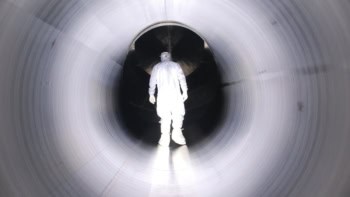The Sudbury Neutrino Observatory in Canada has detected its first neutrinos. The observatory consists of 10000 photomultiplier tubes that surround a 1000-tonne tank of ultrapure heavy water located some 2000 metres below ground. "This is tremendously exciting. It is 15 years since the start of the SNO project, and to see such clear examples of neutrino interactions within days of finally turning on the full detector was a real triumph for the entire SNO team, " says Art McDonald, director of the project.

The observatory is a joint project between Canada, the US and the UK, and was officially opened last year. It is the first detector that is capable of distinguishing between the three different types of neutrino – electron, muon and tau neutrinos. Neutrinos are generated by nuclear reactions deep inside the sun, by cosmic ray interactions in the atmosphere, or by violent astrophysical events such as supernovae explosions.
“Detecting any neutrino is no mean feat, and SNO is attempting to do it in a way that no one has ever tried before, ” says David Wark, a team member from Oxford University. “We have spent more than a decade trying to reach the lowest levels of radioactive contamination ever seen while building a complex detector the size of an apartment block in the dreadful conditions at the bottom of a very deep mine. Some of my friends doubted my sanity, and frankly I was starting to agree with them.”
Neutrinos travel at the speed of light and only interact with matter via the weak force, which makes them extremely difficult to detect. Neutrino detectors must be placed hundreds of metres below ground to isolate them from cosmic rays, and must be made from ultrapure materials to prevent natural radioactivity mimicking neutrino interactions. When a neutrino interacts with the heavy water at SNO, a faint flash of Cerenkov radiation is emitted and recorded by the photomultiplier tubes. When 30 detectors see at least one photon each at the same time, the observatory registers it as an event. Only 10-20 solar neutrino events are expected per day.
Astronomers hope to use the Sudbury detector to confirm the evidence for neutrino mass obtained at the Super-Kamiokande detector in Japan last year. An accurate measurement of the mass could help solve the ‘solar neutrino problem’ – the fact that existing experiments detect less than half the solar-neutrino flux predicted by theory. The Super-Kamiokande results suggest that electron neutrinos are oscillating into muon neutrinos, which cannot be detected by existing neutrino observatories. As Sudbury can detect muon neutrinos, it should record a higher flux of solar neutrinos than Super-Kamiokande.



